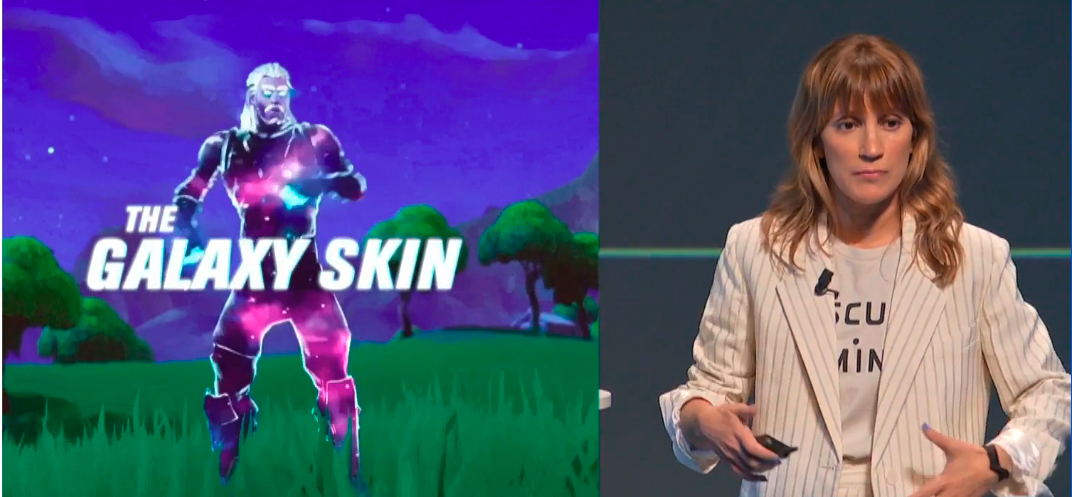
How do brands “show
up” in the metaverse? According to R/GA Global Chief Creative Officer Tiffany Rolfe, it’s going to start with “metaphors” from the real world.
“If you
remember Web1, Web2, we had folders on our desktops. We designed buttons to be rubbery, round, a very skeuomorphic approach. But soon we could start to really rethink how brands show up,” Rolfe
said during a keynote presentation at the Cannes Lions Tuesday, adding, “But what I think will never change, is thinking about how we can show up uniquely for people. How are we bringing value
to them. Just now it’s in the context of these new worlds.”
She emphasized that this branding attribute will become even more important in the metaverse where consumers
will increasingly be “anonymous in some cases and have different identities, which makes targeting pretty impossible.
advertisement
advertisement
“So you’ll have to show up in a really
meaningful way that brings value to people.”
She then showed a meaningful example of why metaphors and avatars are not entirely new for brands, flashing Kellogg’s Tony
the Tiger on the screen.
“Tony the Tiger connected with kids by bringing character and personality to a cornflake,” she said, adding, “But in the metaverse, this is
Tony the Tiger on DMT. You can’t just port your brand assets over. You’ll need to dimensionalize it in new ways.”
While it’s still early days for rendering branded
metaphors in the metaverse, Rolfe showed examples of R/GA work for clients ranging from Samsung Galaxy to Verizon’s 5G network service utilizing explicitly metaphorical representations of those
brands.
For Samsung, it created a skin in burgeoning gaming and metaverse platform Fortnite that literally empowered players within the game, the way its tangible phone might do in the real
world.
For Verizon 5G, R/GA created a virtual Super Bowl experience that enabled 40 million people to connect during the Big Game amid the COVID-19 pandemic.
“You don’t have to just make a digital version of your product and just plug that into the digital space,” she explained. “It can actually be more of an expression of
your product or brand.”
